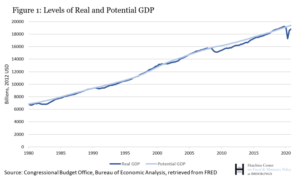The most interesting thing, at least to me, about the story of Warren Mosler and the development of MMT (Modern Monetary Theory) is that at the time, calling him an economist was a stretch.
While it’s true he graduated with a BA in Economics from the University of Connecticut, he graduated with a 2.5 GPA after switching his major from engineering to economics because he was failing engineering.
That is not the standard record of a stellar student and future scholar.
He also never pursued additional education in economics.
What was Warren Mosler doing when he had his “Gee, that’s odd” moment?
He tells this story in his book Soft Currency Economics. I have Soft Currency Economics II, published by Valance Company , Inc, in 1996 then again in 2012.
In short, he was a bond trader.
After graduating from University, he got a job with a trading firm, and in 1992 opened his own, Illinois Income Investors.
He thought he saw some weirdness related to Italian government bonds.
He saw that he could buy Italian government bonds denominated in lira (the is before the implementation of the euro) that paid 14% interest, and he could obtain the money with which to buy them by borrowing Lira from Italian banks at 12%.
To him, this looked like a guaranteed “free lunch” return of 2%.
As a bond trader, he couldn’t not investigate this, but it was so obviously free money that something had to be wrong here.
He writes that he got obsessed with this
Again, he’s a bond trader. He’s looking for value. This looks like free money.
So he started talking about it with his partners. This looked weird to them too.
So they go to Rome, to meet with Treasury officials
Warren and a partner named Maurice fly to Rome to meet with people within the Italian government to try to figure out what they’re seeing.
They meet with Professor Luigi Spaventa, a senior official of the Treasury Department of the Italian Government.
The Q&A provided insights
Mosler: “Professor Spaventa, this is a rhetorical question, but why is Italy issuing Treasury securities? Is it to get lira to spend, or is it to prevent the lira interbank rate falling to zero from your target rate of 12%”?
NOTE: The interbank rate is the rate the central bank charges commercial banks for loans needed to meet their reserve requirements, which is a standard banking thing.
It took Spaventa a minute or two to ponder the question.
Spavena: “No. The interbank rate would only fall to 1/2%, NOT 0% as we pay 1/2% interest on reserves”.
NOTE: Reserves at a central bank are like a checking account at a commercial bank. Some central banks pay no interest on reserves. At this time, the Italian central bank paid 1/2%.
Spaventa pondered this question and his answer a little more, then suddenly realized, and said out loud, that the IMF was requiring the Italian government to tighten policy due to the risk of default, when there was no risk of default.
Why? Because the sale of bonds denominated in lira did not fund the Italian government.
Why? Because the Italian government was monetarily sovereign, which is to say they issued a sovereign currency. The Italian government created lira when and as needed to cover their bills, independent of whether they subsequently sold lira denominated bonds.
For what it’s worth, the Italian government is no longer monetarily sovereign. They use the euro and whereas before they had full control of the lira, now they’re like an American state who uses US dollars but does not issue US dollars, except Italy now uses euros, but does not issue euros. Euros are issued by the European Central Bank. The Italian government changed policy
About a week later, the Italian government issued an announcement
“No extraordinary measure will be taken. All payments will be made on time”.
This was good news to Illinois Income Investors, as at the time they were the largest holder of Italian government debt outside of Italy.
Illinois Income Investors subsequently used Italian government securities to earn about $100M in profits for their clients. After all, it was a 2% free lunch.
And… a new economics came into being
Warren Mosler continued to think about the ramifications of government solvency not being an issue as regards to non-convertible currencies and floating exchange rates.
The people at Illinois Income Investors, and now people at the Italian Treasury Department, knew there was no default risk for a country with a sovereign currency.
So he wrote up what he was thinking and sent it to people who looked it over.
Now at first glance this may not look like a big deal. After all, it’s just a small shift in perspective. But in the world of economics it came to be as significant as Nicholas Copernicus wondering how the solar system would be if the sun was at the center, or when Albert Einstein wondered what would be the implications of the speed of light BEING an absolute constant.
It was a small shift in perspective that allowed things to be seen that had previously been missed.
Initially it was called Mosler Economics because some guy named Mosler thought it up.
But when it started to be taken serious by PhD economists, it at some point came to be known as Modern Monetary Theory, or MMT.



